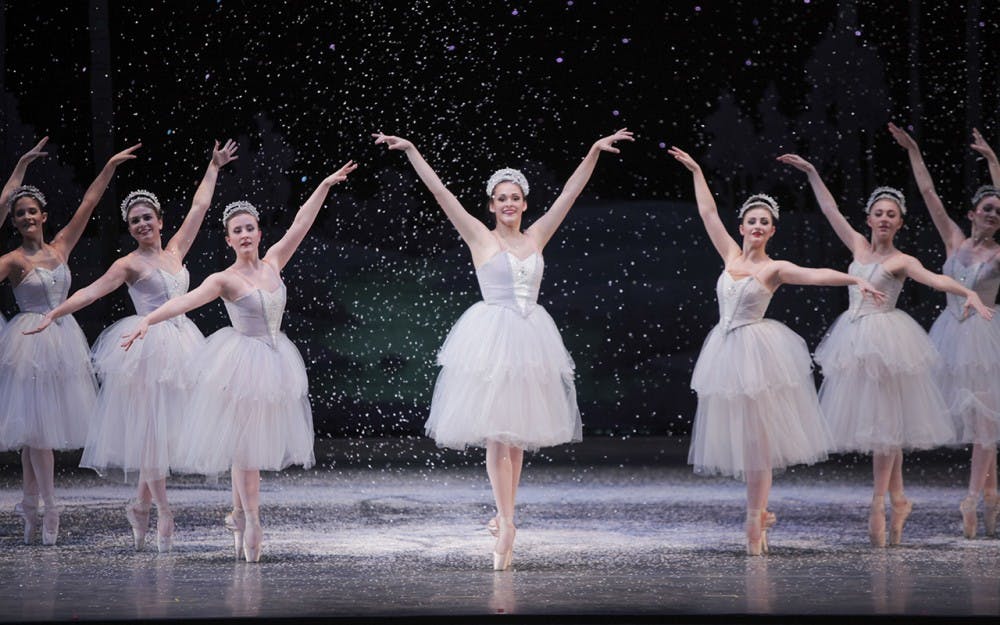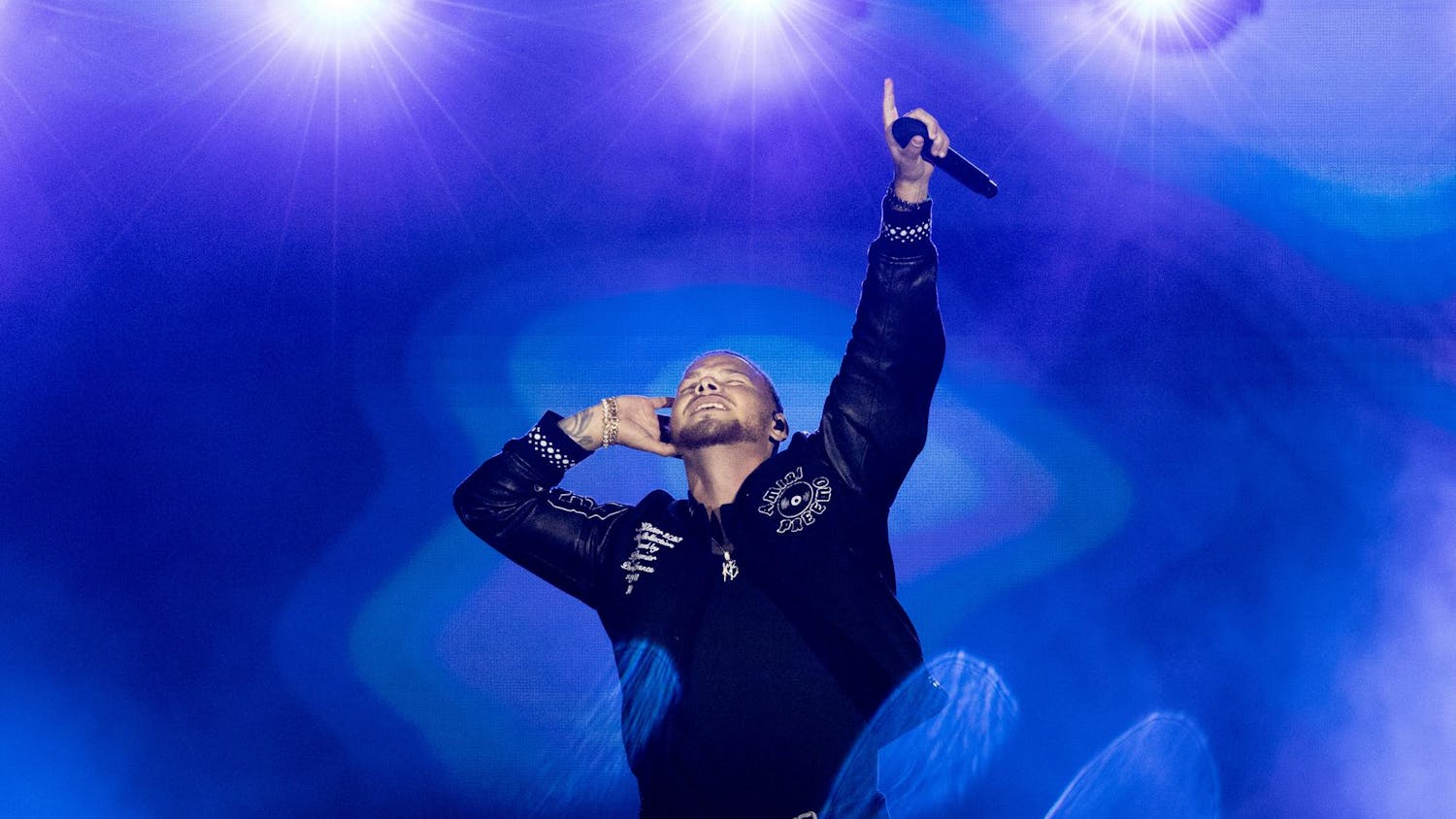A winter wonderland will return to the Musical Arts Center stage Thursday night in IU Ballet’s annual production of Pyotr Tchaikovsky’s Nutcracker Ballet.
This production marks its 10th year of direction by Professor Michael Vernon. Vernon has been the chair of IU’s Ballet Department since 2006 and has extensive experience working with prominent ballet groups such as the American Ballet Theatre and the Metropolitan Opera Ballet.
“This is my third year in Michael’s production,” said junior Danielle Cesanek, “and it gets better every year.”
Cesanek will dance the principal role of the Sugar Plum Fairy in Friday’s show. In the past, she said, she had roles in the corps de ballet, or accompanying dance group, and will be a part of the corps in Thursday’s show as well.
She said Vernon puts emphasis on the musicality of the production, choreographing steps with precision to match the music.
“The story comes to life through his directing,” Cesanek said.
Vernon said a difficulty for him, year after year, is trying to find new ways to improve and modify the choreography or “kick it up a notch, as it were.” He said changes are normally minor, and this year most of these changes pertain to the character of Clara.
He said working on the Nutcracker is different from other ballets, as it is seasonal and has more of an emphasis on visuals than on character development. The story of Clara, the young girl to whom the physical Nutcracker is gifted in the story, is one all girls can relate to and be inspired by in terms of entering the field of dance.
Many of the younger ballerinas in the production, especially the corps, are sourced from IU Ballet’s pre-college program, which takes in children ages 7 to 18. Vernon said the children are mature and have drive and learn from their experience with the older dancers.
While the dress rehearsal on Tuesday progressed as scheduled, Vernon said the production has not been without speed bumps. The department lost multiple personnel in the past year.
“My faculty is completely changed,” Vernon said. “The coaches have all changed, and they had to relearn the ballet themselves.”
However, Cesanek said using both talented ballet and music students ensures that the show comes together well.
Vernon said another general difficulty directors of university ballet programs have is the constant change of students as they arrive and graduate. Ballet students at IU might stay for as little as two years, while in a professional ballet company like the ones he has worked with previously, a principal dancer can stay on for as long as 10 years.
“You never have the luxury that professional companies have of keeping someone in the same role,” Vernon said. “It becomes labor intensive.”
Along with the ever-changing selection of ballerinas for each year’s productions, Vernon said the Ballet Department is different from other programs at IU because it is comprised of students attending for a grade on technique, not right answers.
“The hard thing about dealing with ballet in an academic setting is that we deal so much with emotion,” Vernon said.
He said an audience’s impression of a ballet is entirely subjective. Unlike teaching subjects like math or science, ballet is not a matter of facts.
“It is something intangible,” Vernon said. “People’s charisma on stage is not about facts or theorems.”
Vernon said there are benefits to teaching ballet at a university as opposed to a professional dance company. For one, a student orchestra is always available for practice, so the ballet department does not have to worry about budgeting for musicians. In a traditional ballet and theater company, dancers and musicians are paid to perform. At IU, it is the other way around: the students pay tuition.
Cesanek said casting students for the main roles and using student musicians gives the production a special quality. She said the convergence of detailed choreography, music and stage design make the show flow smoothly.
“Everything’s really beautiful when it comes together with the music, and all the dancers work really hard,” Cesanek said. “We’re in rehearsal all day and night up until the show.”




